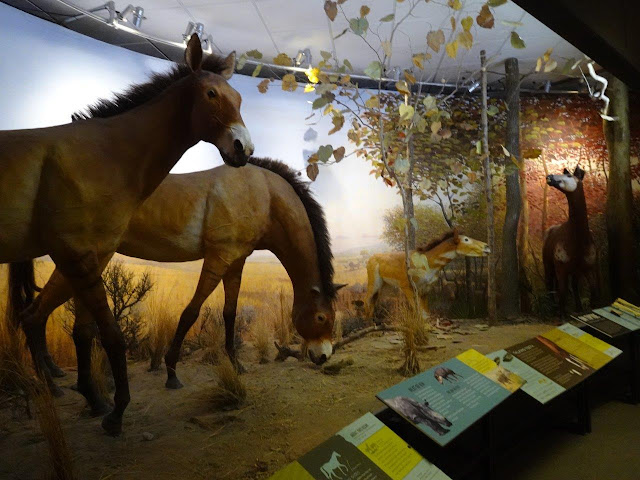Last spring, I visited Los Alamos, NM, where the atom bomb was tested in WWII, but I learned that the other half of the story was in Oak Ridge, TN, so I decided to stop here this fall on my way to Atlanta and Florida for the winter. It was a long day's drive from Lexington, KY, because of an hour-long traffic jam, but I made it here yesterday before dark.
Today, I headed back to the town of Oak Ridge and visited three museums. There are other buildings and places related to the town during WWII, but I picked the most important things to see.
Oak Ridge was chosen as the place where rough uranium ore would be concentrated because it met the following criteria:
- Isolated location
- Not close to any big cities
- Lots of electrical power available
- Lots of water available for the concentration process
- Enough space to house at least 13,000 workers
In 1941, the federal government bought up all the farms and homes in the area and forced the residents to locate somewhere else. It then began building the huge facility for housing the concentration process and housing for workers. Instead of only 13,000 workers, however, by the end of the war, the town ended up with over 80,000 workers. And besides housing for workers, they had to build schools, community centers, and all of the stores that workers would need, as well as roads and utility and water connections from the nearby dams and rivers.
The first place I stopped was the Visitor Center, which was housed in the Children's Museum, and actually the Children's Museum had quite an interesting display on its own. Here are a few photos from that museum:
Next, on to the local Oak Ridge Historical Museum. It was located in the nearby Community Center.
I liked this poster. How are you supposed to identify a spy stealing a secret formula or what was in a "suspicious" package or briefcase??
There was a special display of the role of Black Americans in Oak Ridge. These "homes" were considerably poorer in quality that the typical housing for white residents.
Some of the many items donated by residents of Oak Ridge after the war.
Final stop was the Smithsonian American Museum of Science and Industry.
Because of the design of the museum, it was hard to take photos of everything, so I just took these few of the main exhibit room. Mostly, it focused on the building of the atomic bombs, but also included some general science items.
The thing I liked the most was this audio-kinetic sculpture. Staff would turn it on for a few minutes upon request, but it was very noisy, so it was not allowed to run constantly. See below for a You-Tube video I took of the working device.
Click here to view video of the working device.

















































